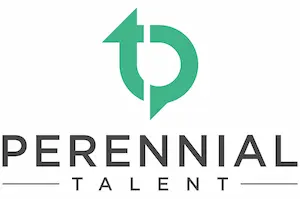How to Use Competencies for Career Development
Career Development allows employees to explore career options, pursue career goals, and ultimately take charge of their own careers. Providing career paths for your employees is one way to grow your people and ensure that they remain happy and engaged.
Features of a Career Development Program
When creating a career development program using career paths there are four features that you will want to include in the design process.
1. Build a career map
The career map describes the different positions, roles, and stages within an area and across the organization. This map visually showcases how each role relates to the next. These maps can be created by using existing information that your organization may already have in place such as job bands that describe not only vertical moves but also horizontal career moves. Modern career maps tend to resemble lattices as opposed to ladders.
2. Identify the knowledge, skills, and abilities for the roles
Once you have your map, you will need to clearly define what successful performance looks like for each role. What are the key competencies or skills required for that role? As you begin to define your roles, you will likely find that there are competencies that relate to multiple groups of jobs or that are transferable. This makes it easier for employees to move from one role to the next. You will also need to define the knowledge requirements for success (e.g., accounting principles, SAP, etc.) and the critical experience or education requirements (e.g., licenses, certifications, degrees, etc.) needed for that role.
3. Link your program to learning and development
It is important to identify learning and development opportunities tied to the competencies or other requirements of the job so that an employee can work towards developing a skill they will need to advance. You can develop a catalog of learning tied to your competencies and provide employees with the opportunity to apply what they have learned through activities such as job rotations or special projects.
4. Ensure that you have a process owner and accountability measures in place
You will want to ensure that you treat career development program like a project and ensure that someone is responsible for maintaining the program. You will want to define the roles and responsibilities for those participating in the program and for those managing it. For example, what role will the manager play in the career development process? Will you have career managers? If so, what will their roles be? Who is responsible for updating the career map or role descriptions as the world of work changes? Overall, you want to ensure that you build clear roles and responsibilities into the process.
Creating a framework for employees to navigate the career development program
After an employee has identified a career path, they can determine how well their knowledge, experience, and competencies fit the requirements of the role. The employee can then develop an individual learning and development plan to address any gaps. A career development framework can help you to organize your program, policies, procedures, and tools so that all employees can take ownership of their careers.
An effective career development framework includes the following five steps:
Step 1: Reflect
During this step, the employees needs to consider their own career goals and aspirations and what career they would like to pursue.
Step 2: Discover
The employee can explore potential career opportunities with the organization to identify positions that may relate to their short- and long-term career goals.
Step 3: Assess
The employee can assess their own knowledge, experience, and competencies against the requirements of the role they would like to move into. They can then identify any strengths and gaps and set learning and development goals.
Step 4: Develop
An employee can create an individual learning and development plan tied to their goals. They can then pursue learning and development activities related to any gaps they may need to address in order to reach their career goals.
Step 5: Evaluate
The employee can then re-assess their knowledge, experience, and competencies to determine if they have reached their learning goals or if they need to pursue additional learning and development opportunities.


